Family
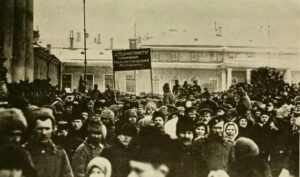 How can the February Revolution begin on March 8th, you might ask? Well, if you know much about 1917 Russia, you know that the calendar at that time was the Julian calendar, and not the Gregorian calendar that we use today in most countries. That was how the February Revolution (known as such because of Russia’s use of the Julian calendar) which began on February 23rd in the Julian calendar, actually began on March 8th in the now-used Gregorian calendar. The February Revolution started with riots and strikes over the scarcity of food erupt in Petrograd. One week later, centuries of czarist rule in Russia ended with the abdication of Czar Nicholas II, and Russia took a dramatic step closer to a communist revolution.
How can the February Revolution begin on March 8th, you might ask? Well, if you know much about 1917 Russia, you know that the calendar at that time was the Julian calendar, and not the Gregorian calendar that we use today in most countries. That was how the February Revolution (known as such because of Russia’s use of the Julian calendar) which began on February 23rd in the Julian calendar, actually began on March 8th in the now-used Gregorian calendar. The February Revolution started with riots and strikes over the scarcity of food erupt in Petrograd. One week later, centuries of czarist rule in Russia ended with the abdication of Czar Nicholas II, and Russia took a dramatic step closer to a communist revolution.
By 1917, Czar Nicholas II had already lost all of his credibility. The corruption in the government was rampant, the economy was a mess, and Nicholas repeatedly dissolved the Duma…the Russian parliament established after the Revolution of 1905…whenever it opposed his will. All that was bad, but the immediate cause of the February Revolution, which was the first phase of the Russian Revolution of 1917…was Russia’s disastrous involvement in World War I. Militarily, Russia was no match for industrialized Germany, and Russian casualties were greater than those sustained by any nation in any previous war. They were severely pounded by the Germans. Meanwhile, the economy was hopelessly disrupted by the costly war effort, and moderates joined Russian radical elements in calling for the overthrow of the czar, who was already weak due to family problems, namely a sick child.
While most of the world switched from the Julian calendar to the Gregorian calendar in 1582, Russia didn’t make the conversion until 1918. So, 104 years ago, the Russian people irrevocably had half a month wiped out of their lives…13 days of February in 1918. Their calendar went from January 31, 1918, to February 14, 1918…overnight. On March 8th or February 23rd, 1917, depending on the calendar you choose to use for the event, demonstrators were clamoring for bread in the streets of the Russian capital of Petrograd (now known as Saint Petersburg). Supported by 90,000 men and women on strike, the protesters clashed with police but refused to leave the streets. The strike spread, and on March 10th, it had spread among all of Petrograd’s workers, and irate mobs of workers destroyed police stations. Several factories elected deputies to the Petrograd Soviet, or “council” of workers’ committees, following the model devised during the Revolution of 1905.
By March 11th, the troops of the Petrograd army garrison ordered soldiers to crush the uprising. Regiments opened fire, killing demonstrators, but the protesters kept to the streets, and the troops began to waver. Nicholas dissolved the Duma again on that day, and on March 12, the revolution triumphed when regiment after regiment of the Petrograd garrison defected to the cause of the demonstrators. The soldiers, some 150,000 men, subsequently formed committees that elected deputies to the Petrograd Soviet.
The uprising forced the imperial government to resign, and the Duma formed a provisional government that peacefully vied with the Petrograd Soviet for control of the revolution. March 14th, saw the Petrograd Soviet 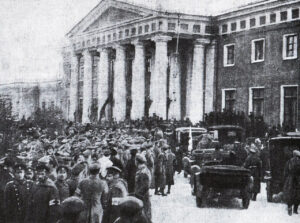 issuing “Order No. 1,” which instructed Russian soldiers and sailors to obey only those orders that did not conflict with the directives of the Soviet. Czar Nicholas II abdicated the throne the next day, March 15th, in favor of his brother Michael, who refused the crown, ending the czarist autocracy.
issuing “Order No. 1,” which instructed Russian soldiers and sailors to obey only those orders that did not conflict with the directives of the Soviet. Czar Nicholas II abdicated the throne the next day, March 15th, in favor of his brother Michael, who refused the crown, ending the czarist autocracy.
The Petrograd Soviet tolerated the new provincial government and hoped to salvage the Russian war effort while ending the food shortage and many other domestic crises…a daunting task. Meanwhile, Vladimir Lenin, leader of the Bolshevik revolutionary party, left his exile in Switzerland and crossed German enemy lines to return home and take control of the Russian Revolution.
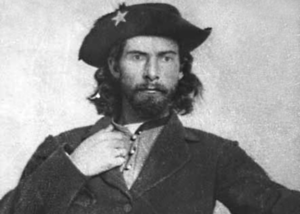 William T Anderson’s life was always rather a violent one, but it escalated when his sister died while in the custody of the Union soldiers during the Civil War. Anderson was born around 1840 in Hopkins County, Kentucky, to William and Martha Anderson. His siblings were Jim, Ellis, Mary, Josephine, and Martha. His schoolmates recalled him as a well-behaved, reserved child, so they might be surprised to see how he ended up. Anderson began to support himself early on, by stealing and selling horses in 1862. After a Union loyalist judge killed his father, Anderson killed the judge and fled to Missouri. He was always one to exact revenge for anything in which he felt that he or his family were wronged. In Missouri, he robbed travelers and killed several Union soldiers.
William T Anderson’s life was always rather a violent one, but it escalated when his sister died while in the custody of the Union soldiers during the Civil War. Anderson was born around 1840 in Hopkins County, Kentucky, to William and Martha Anderson. His siblings were Jim, Ellis, Mary, Josephine, and Martha. His schoolmates recalled him as a well-behaved, reserved child, so they might be surprised to see how he ended up. Anderson began to support himself early on, by stealing and selling horses in 1862. After a Union loyalist judge killed his father, Anderson killed the judge and fled to Missouri. He was always one to exact revenge for anything in which he felt that he or his family were wronged. In Missouri, he robbed travelers and killed several Union soldiers.
Anderson became a guerrilla, when his family was living in Council Grove, Territory of Kansas at the start of the Civil War. After William Quantrill’s raid on Aubry, Kansas on March 7, 1862, a Federal company from Olathe, Kansas sent a patrol from Company D, Eighth Kansas Jayhawker Regiment to investigate. Their mission was to seek out Southern sympathizers living nearby, who might be accused of aiding the raiders. Anderson’s father and uncle were named as such, and when the Jayhawker company arrived at the Anderson farm on March 11th, William and his younger brother Jim were delivering 15 head of cattle to the US commissary agent at Fort Leavenworth. When the brothers returned to their farm, they found their father and uncle hanged in retaliation, their home burned to the ground, and all their possessions stolen. It was an act of war in their minds, because the men had no chance to defend themselves. Two days later Bill and his brother Jim were both riding with Quantrill’s Raiders, a group of Confederate guerrillas operating along the Kansas–Missouri border. Anderson moved his sisters from Kansas, and for a year they lived at various places stopping finally with the Mundy family on the Missouri side of the line near Little Santa Fe. When asked why he joined Quantrill, Anderson replied by saying, “I have chosen guerrilla warfare to revenge myself for wrongs that I could not honorable revenge otherwise. I lived in Kansas when this war commenced. Because I would not fight the people of Missouri, my native State, the Yankees sought my life but failed to get me. [They] revenged themselves by murdering my father, [and] destroying all my property.”
Anderson became a skilled bushwhacker and quickly earned the trust of the group’s leaders, William Quantrill and George M Todd. It was his bushwhacking skills that ultimately marked him as a dangerous man…and eventually led the Union to imprison his sisters. Then, after a building collapse in the makeshift jail in Kansas City, Missouri, left one of his sisters dead, while in custody and the others permanently maimed, Anderson devoted himself to revenge. He took a leading role in the Lawrence Massacre and later took part in the Battle of Baxter Springs, both in 1863. He later satisfied his revenge by hijacking a train full of Union troops and slaughtering 24 of them, thus giving him the name “Bloody Bill” Anderson.
By 1863, all Bill had left was a brother and two sisters, who had miraculously survived the August 13 Union jail collapse in Kansas City. The collapse wasn’t an accident. Union guards from the 9th Kansas Jayhawker Regiment, serving as provost guards in town, intentionally collapsed a three-story brick building on a number of young Southern female prisoners. Fourteen-year-old Josephine Anderson was killed in the collapse. Bill’s ten-year-old sister Martha’s legs were horribly crushed crippling her for life, and his sixteen-year-old sister Mary suffered serious back injuries and facial lacerations. Both girls would carry their physical and emotional scars for the rest of their lives. War is an ugly thing, and unfortunately, sometimes unscrupulous people do things 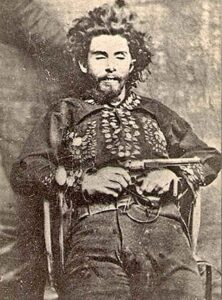 they shouldn’t. The atrocity at the jail was a war crime and should have been punished as such, but I suppose that didn’t justify the murders that followed, because there was no proof that those murdered were involved in any way.
they shouldn’t. The atrocity at the jail was a war crime and should have been punished as such, but I suppose that didn’t justify the murders that followed, because there was no proof that those murdered were involved in any way.
Union military leaders ordered Lieutenant Colonel Samuel P Cox to kill Anderson and provided him with a group of experienced soldiers. A local woman saw Anderson soon after he left Glasgow and told Cox where he was. On October 26, 1864, Cox pursued Anderson’s group with 150 men and engaged them in a battle called the Skirmish at Albany, Missouri. Anderson and his men charged the Union forces, killing five or six of them, but turned back under heavy fire. Only Anderson and one other man, the son of a Confederate general, continued to charge after the others had retreated. Anderson was hit by a bullet behind an ear, which most likely killed him instantly. Four other guerrillas were killed in the attack as well. The victory made a hero of Cox and led to his promotion.
 Sometimes, I am amazed at what you can “sell” people. In 1977, one of Elvis Presley’s assistants saw an opportunity when Elvis didn’t finish a glass of water after a concert. The assistant held an auction and sold the few drops of water left in the glass for $455. And then, there was the two golf balls that were sold for $1400. So, what made these golf balls so special…well, they were swallowed by a python. The snake had to have surgery to remove them, and they were sold after. A British artist, after going through a period of depression, during which she simply stayed in bed, decided to sell the ensuing messy bedroom “furnishings,” so she auctioned them off for $150,000 after calling them “My Bed.” And let us not forget that on March 6, 2012, a woman from Nebraska sold a three-year-old McDonald’s Chicken McNugget for $8100 because it resembled George Washington. She was raising the money to send children to summer camp. The auction site apparently eased its rules on selling expired food for the woman, so that she could raise money to support her cause.
Sometimes, I am amazed at what you can “sell” people. In 1977, one of Elvis Presley’s assistants saw an opportunity when Elvis didn’t finish a glass of water after a concert. The assistant held an auction and sold the few drops of water left in the glass for $455. And then, there was the two golf balls that were sold for $1400. So, what made these golf balls so special…well, they were swallowed by a python. The snake had to have surgery to remove them, and they were sold after. A British artist, after going through a period of depression, during which she simply stayed in bed, decided to sell the ensuing messy bedroom “furnishings,” so she auctioned them off for $150,000 after calling them “My Bed.” And let us not forget that on March 6, 2012, a woman from Nebraska sold a three-year-old McDonald’s Chicken McNugget for $8100 because it resembled George Washington. She was raising the money to send children to summer camp. The auction site apparently eased its rules on selling expired food for the woman, so that she could raise money to support her cause.
Granted these items are novelties, and some went for a good cause, but seriously…people will pay good money 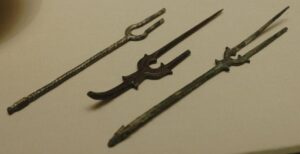 for the strangest things. It actually makes me want to look through my own possessions to see what oddities I might have that would bring in millions of dollars, because apparently, they could sell. You just never know. What is it that makes people decide that they need a few drops of water left in a glass after Elvis drank from the glass, or a McNugget that looks like George Washington, or the many food items that have looked like the Virgin Mary? I suppose that if these things are for a good cause, maybe they are simply donating for the purpose of helping the cause. Or maybe they actually see value in the item or items they are bidding on.
for the strangest things. It actually makes me want to look through my own possessions to see what oddities I might have that would bring in millions of dollars, because apparently, they could sell. You just never know. What is it that makes people decide that they need a few drops of water left in a glass after Elvis drank from the glass, or a McNugget that looks like George Washington, or the many food items that have looked like the Virgin Mary? I suppose that if these things are for a good cause, maybe they are simply donating for the purpose of helping the cause. Or maybe they actually see value in the item or items they are bidding on.
I suppose that in the case of “seeing value” in an item that almost no one else sees value in, I would have to 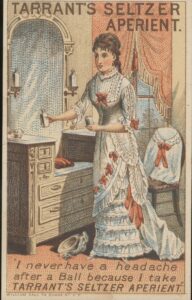 say…to each his own, but that for the amount some of these items went, there must have been a few people who could see value in something seemingly worthless…at least to me. That said, I decided to go out to an auction site to see what “treasures” I could find. I was somewhat disappointed in that I found no expired food items, or famously worthless celebrity use items. Mostly what I saw were items that did have some value, depending on your need…things like bags full of vintage doll clothes, old pitchers and glassware, belt buckles, automobile emblems, vintage cigarette lighters, coins, and vintage toys. Some of these things could very easily have great value, in that the vintage items could be rare collectables. Nevertheless, I didn’t see anything I couldn’t live without, nor did I find anything that was going for a very high price. I suppose that it would be a rare thing to come across something that cost you nothing, but sold for millions. Still, the idea of selling something for big money isn’t a bad one. It’s just a matter of finding the right item, presenting it to the right audience, and finding yourself feeling very shocked when it sold for the big bucks.
say…to each his own, but that for the amount some of these items went, there must have been a few people who could see value in something seemingly worthless…at least to me. That said, I decided to go out to an auction site to see what “treasures” I could find. I was somewhat disappointed in that I found no expired food items, or famously worthless celebrity use items. Mostly what I saw were items that did have some value, depending on your need…things like bags full of vintage doll clothes, old pitchers and glassware, belt buckles, automobile emblems, vintage cigarette lighters, coins, and vintage toys. Some of these things could very easily have great value, in that the vintage items could be rare collectables. Nevertheless, I didn’t see anything I couldn’t live without, nor did I find anything that was going for a very high price. I suppose that it would be a rare thing to come across something that cost you nothing, but sold for millions. Still, the idea of selling something for big money isn’t a bad one. It’s just a matter of finding the right item, presenting it to the right audience, and finding yourself feeling very shocked when it sold for the big bucks.
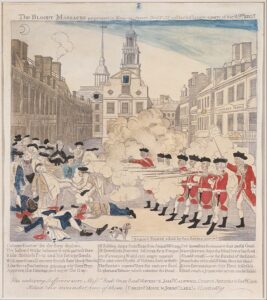 A mob of American colonists gathered at the Customs House in Boston, on the cold, snowy night of March 5, 1770. They called themselves Patriots, and they were there to protest the occupation of their city by British troops, who were sent to Boston in 1768 to enforce unpopular taxation measures passed by a British parliament that lacked American representation. I suppose it is possible that the colonists would have agreed to increase their taxes in an effort to help pay for the Seven-Year War, but the reality is that they were not asked…they were told, and it was to be forced upon them. They were not going tolerate that…so they would fight.
A mob of American colonists gathered at the Customs House in Boston, on the cold, snowy night of March 5, 1770. They called themselves Patriots, and they were there to protest the occupation of their city by British troops, who were sent to Boston in 1768 to enforce unpopular taxation measures passed by a British parliament that lacked American representation. I suppose it is possible that the colonists would have agreed to increase their taxes in an effort to help pay for the Seven-Year War, but the reality is that they were not asked…they were told, and it was to be forced upon them. They were not going tolerate that…so they would fight.
For their part, the British would also not be moved, and they were prepared to fight. British Captain Thomas Preston, the commanding officer at the Customs House, ordered his men to fix their bayonets and join the guard outside the building. The colonists…somewhat less prepared, responded by throwing snowballs and other objects at the British regulars. As the snowball fight commenced, Private Hugh Montgomery was hit, and not knowing what hit him, he discharged his rifle at the crowd. With that, the other soldiers began firing too, and when the smoke cleared, five colonists were dead or dying. They were Crispus Attucks, Patrick Carr, Samuel Gray, Samuel Maverick and James Caldwell. Three more were injured. Although it is unclear whether Crispus Attucks, an African American, was the first to fall as is commonly believed, the deaths of the five men are regarded by some historians as the first fatalities in the American Revolutionary War. After the massacre, the British soldiers were put on trial for war crimes. Strangely, patriots John Adams and Josiah Quincy agreed 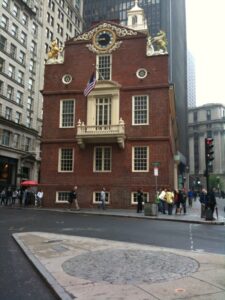 to defend the soldiers in a show of support of the colonial justice system. When the trial ended in December 1770, two of the British soldiers were found guilty of manslaughter. As punishment, their thumbs were branded with an “M” for murder. In my mind, that is such a minor punishment, for what we view as such a major crime. I’m not sure if I think that any of the British soldiers were really guilty of murder, or even manslaughter, because it seems to me that in a moment of panic, the soldier mistakenly thought he was in eminent danger, when in reality, it was simply a snowball. Still, the punishment really didn’t fit the crime for which it was given.
to defend the soldiers in a show of support of the colonial justice system. When the trial ended in December 1770, two of the British soldiers were found guilty of manslaughter. As punishment, their thumbs were branded with an “M” for murder. In my mind, that is such a minor punishment, for what we view as such a major crime. I’m not sure if I think that any of the British soldiers were really guilty of murder, or even manslaughter, because it seems to me that in a moment of panic, the soldier mistakenly thought he was in eminent danger, when in reality, it was simply a snowball. Still, the punishment really didn’t fit the crime for which it was given.
The Stamp Act was called the “Boston Massacre” by the Sons of Liberty, a Patriot group formed in 1765 to oppose it. The “Boston Massacre” was viewed as a battle for American liberty and just cause for the removal of British troops from Boston. Patriot Paul Revere made an engraving of the incident, depicting the British soldiers lining up like an organized army to suppress an idealized representation of the colonist uprising. Copies of the engraving were distributed throughout the colonies. This was to help reinforce negative American sentiments about British rule. The colonists needed as many in their ranks to be onboard with the battle, and so any depiction of the British as cruel slave masters would help.
The American Revolution officially began in April of 1775, when British troops from Boston fought with American militiamen at the battles of Lexington and Concord. The British troops were under orders to capture 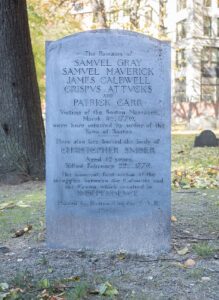 Patriot leaders Samuel Adams and John Hancock in Lexington and to confiscate the Patriot arsenal at Concord. Unfortunately for them, the Patriots were several steps ahead of them, and neither of the missions were accomplished because Paul Revere and William Dawes rode ahead of the British to warn Adams and Hancock and to rouse the Patriot minutemen.
Patriot leaders Samuel Adams and John Hancock in Lexington and to confiscate the Patriot arsenal at Concord. Unfortunately for them, the Patriots were several steps ahead of them, and neither of the missions were accomplished because Paul Revere and William Dawes rode ahead of the British to warn Adams and Hancock and to rouse the Patriot minutemen.
The British forces were forced to evacuate Boston eleven months later, in March 1776, following American General George Washington’s successful placement of fortifications and cannons on Dorchester Heights. Oddly the eight-year British occupation of Boston ended with a bloodless liberation of the city. General Washington, commander of the Continental Army, was presented with the first medal ever awarded by the Continental Congress for the victory. It would be more than five years before the Revolutionary War came to an end with British General Charles Cornwallis’ surrender to Washington at Yorktown, Virginia.

 My sister-in-law, Rachel Schulenberg was just about 4 months older than my oldest daughter, Corrie, so she was like a sister-in-law and a daughter too. The things she liked were similar to things my daughters, Corrie Petersen and Amy Royce liked. It makes sense that it would be that way, because my brother-in-law, Ron Schulenberg was just 7 years old when my husband, Bob and I got married. They were in the generation of our kids. I guess that is part of what makes it so hard to believe that Rachel has been living in Heaven for a little over a year now. She was just too young to have a fatal stroke. It just shouldn’t happen that way.
My sister-in-law, Rachel Schulenberg was just about 4 months older than my oldest daughter, Corrie, so she was like a sister-in-law and a daughter too. The things she liked were similar to things my daughters, Corrie Petersen and Amy Royce liked. It makes sense that it would be that way, because my brother-in-law, Ron Schulenberg was just 7 years old when my husband, Bob and I got married. They were in the generation of our kids. I guess that is part of what makes it so hard to believe that Rachel has been living in Heaven for a little over a year now. She was just too young to have a fatal stroke. It just shouldn’t happen that way.
Rachel was good friends with my nieces, Machelle Moore and Susan Griffith, and it was through them that she was introduced to their Uncle Ron. It was a match made in Heaven, and they were married over 11 years when she passed away. They were so happy, and I know their marriage would have continued well into their golden years if she hadn’t left us too soon. Besides Ron, Rachel also left behind daughter, Cassie Franklin and her 
 children Lucas and Zoey; son, Riley Birky his fiancée, Sierah Martin, her son, Jace and their little baby that is coming in this August; and Tucker Schulenberg, her youngest, who was adopted by Ron in 2019, so she knew he would be ok. Rachel was a wonderful mother and grandmother, who loved her children and grandchildren so much, and the perfect wife for Ron…his soulmate.
children Lucas and Zoey; son, Riley Birky his fiancée, Sierah Martin, her son, Jace and their little baby that is coming in this August; and Tucker Schulenberg, her youngest, who was adopted by Ron in 2019, so she knew he would be ok. Rachel was a wonderful mother and grandmother, who loved her children and grandchildren so much, and the perfect wife for Ron…his soulmate.
Rachel was a vibrant person, who loved the Lord. She had worked in the office of her church in Powell, Wyoming before she married my brother-in-law, and moved to Casper. She loved telling people about Jesus and seeing people get saved. She wanted to make sure that everyone she could win for the Lord, she did win for 
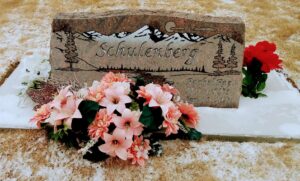 the Lord. Rachel was quick to pray for anyone who needed prayer, even if they didn’t ask her for prayer, she prayer for them. There are many people out there who have received answered prayer because of Rachel…I have no doubt. Rachel was a wonderful person, Christian, and friend to many people, and she has been greatly missed by all of us over the past year. Today would have been Rachel’s 47th birthday. Happy birthday in Heaven, Rachel. We love and miss you very much.
the Lord. Rachel was quick to pray for anyone who needed prayer, even if they didn’t ask her for prayer, she prayer for them. There are many people out there who have received answered prayer because of Rachel…I have no doubt. Rachel was a wonderful person, Christian, and friend to many people, and she has been greatly missed by all of us over the past year. Today would have been Rachel’s 47th birthday. Happy birthday in Heaven, Rachel. We love and miss you very much.

 My grandniece, Kaytlyn Griffith has shocked me with how much she has changed this year. I saw a picture of her with her family, and she is almost as tall as her older sister, Jala Satterwhite. What??? When did that happen? When I think of Kaytlyn, an 8-year-old girl comes to mind, but that was six years ago, so I need to catch up. The funny thing about kids is that for some reason, when they move from elementary school to middle school, suddenly this older kid emerges where a child once was, it seems.
My grandniece, Kaytlyn Griffith has shocked me with how much she has changed this year. I saw a picture of her with her family, and she is almost as tall as her older sister, Jala Satterwhite. What??? When did that happen? When I think of Kaytlyn, an 8-year-old girl comes to mind, but that was six years ago, so I need to catch up. The funny thing about kids is that for some reason, when they move from elementary school to middle school, suddenly this older kid emerges where a child once was, it seems.
Much has changed for Kaytlyn and her family with year, because her older sister moved out after graduation, leaving Kaytlyn the only child at home. That has been a strange change for the whole family. While Jala has her own place now, she and Kaytlyn have actually gotten a little closer now. Their mom, Susan Griffith told me that they even hug now, and that was totally tabu before, and they never hugged before. Even going camping is very different these days. It has usually been Kaytlyn’s mom and dad, Josh and Susan, and her sister, Jala, but this past year was just Kaytlyn and her parents. Jala was working, and in general, doing her own thing. One thing about being the only child at home, is that you get your choice of bedrooms, and so often the oldest child has had the “best” bedroom, but now, Kaytlyn has decided that Jala’s room was fair game, so she moved in there, and is feeling very privileged to have the best.
Kaytlyn is more than just a good student. She is an Honor Roll student. She loves school and has worked very hard at the goal of carrying a 4.0 GPA. She is extremely close to that goal now. She loves math and getting 100% on a math test is pretty common for this smart girl!! Kaytlyn was also a Covid middle schooler, in that she started middle school (6th grade) in the fall of 2019. Of course, we all know what happened next. The first few months were ok, but by Spring Break, Covid-19 had changed everything about school as we all knew it. The whole middle school experience was different than any of us ever could have imagined for that class. Kaytlyn went to one dance in 6th grade before all this started, and then her class didn’t have another dance until a few weeks ago. So, since 2019, she has only gone to two dances. It is sad, because Kaytlyn and her class have missed out on so much.
One consolation…for Kaytlyn anyway, is that because her family lives far enough out in the country, she can 
 qualify for a “Hardship License.” For those who don’t know, that is for certain people who live far enough in the country that it puts a hard ship on their parents, so the state will let them start driving a year before the other kids. While middle school was sort of a “bust,” Kaytlyn will be starting high school in the Fall…and she will be driving. We can only hope that she has a better experience with high school than she did with middle school. Kaytlyn has worked so hard, and she deserves a great year. Today is Kaytlyn’s 14th birthday. Happy birthday Kaytlyn!! Have a great day!! we love you!!
qualify for a “Hardship License.” For those who don’t know, that is for certain people who live far enough in the country that it puts a hard ship on their parents, so the state will let them start driving a year before the other kids. While middle school was sort of a “bust,” Kaytlyn will be starting high school in the Fall…and she will be driving. We can only hope that she has a better experience with high school than she did with middle school. Kaytlyn has worked so hard, and she deserves a great year. Today is Kaytlyn’s 14th birthday. Happy birthday Kaytlyn!! Have a great day!! we love you!!
 Many people believe that there was no good reason for the war in Vietnam. It seemed like a war we were not going to be allowed to win, and many thought it should have been one we just stayed out of. Vietnam became a French colony in 1877 with the founding of French Indochina, which included Tonkin, Annam, Cochin China and Cambodia…Laos was added in 1893. The French lost control of their colony briefly during World War II, when Japanese troops occupied Vietnam.
Many people believe that there was no good reason for the war in Vietnam. It seemed like a war we were not going to be allowed to win, and many thought it should have been one we just stayed out of. Vietnam became a French colony in 1877 with the founding of French Indochina, which included Tonkin, Annam, Cochin China and Cambodia…Laos was added in 1893. The French lost control of their colony briefly during World War II, when Japanese troops occupied Vietnam.
After the war, Japan and France continued to fight over Vietnam. Ho Chi Minh, a revolutionary leader inspired by Lenin’s Bolshevik Revolution began forming an independence movement. He established the League for the Independence of Vietnam, better known as the Viet Minh, in May of 1941. On September 2, 1945, he declared Vietnam’s independence from France, just hours after Japan’s surrender in World War II. When the French rejected his plan, the Viet Minh resorted to guerilla warfare to fight for an independent Vietnam.
One of the most well-known campaigns of the Vietnam War was codenamed Operation Rolling Thunder. It was an American bombing campaign in which US military aircraft attacked targets throughout North Vietnam from March 1965 to October 1968. This operation was intended to put military pressure on North Vietnam’s communist leaders, thereby reducing their capacity to wage war against the US-supported government of South Vietnam. With that, operation American began its involvement began, not only its assault on North Vietnamese territory, but the expansion of US involvement in the Vietnam War.
By the 1950s, the US military began providing equipment and advisors to help the government of South Vietnam to resist a communist takeover by North Vietnam and its South Vietnam-based allies, the Viet Cong guerrilla fighters. The American military initiated limited air operations within South Vietnam in 1962, in an effort to offer air support to South Vietnamese army forces, destroy suspected Viet Cong bases, and spray herbicides such as Agent Orange to eliminate jungle cover. It was an ugly time for anyone in the area. In August 1964, President Lyndon B Johnson expanded American air operations, when he authorized retaliatory air strikes against North Vietnam following a reported attack on US warships in the Gulf of Tonkin. Later that year, Johnson approved 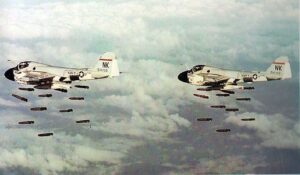 limited bombing raids on the Ho Chi Minh Trail, a network of pathways that connected North Vietnam and South Vietnam by way of neighboring Laos and Cambodia. The president’s goal was to disrupt the flow of manpower and supplies from North Vietnam to its Viet Cong allies. Nothing the United States tried really worked to remove the tensions in the area, and so in 1963, the United States withdrew from Vietnam. Unfortunately, they left behind bombs and land mines from Operation Rolling Thunder and other bombing campaigns of the Vietnam War. By some estimates, those bombs and land mines have killed or injured tens of thousands of Vietnamese people since the United States withdrew its combat troops in 1973.
limited bombing raids on the Ho Chi Minh Trail, a network of pathways that connected North Vietnam and South Vietnam by way of neighboring Laos and Cambodia. The president’s goal was to disrupt the flow of manpower and supplies from North Vietnam to its Viet Cong allies. Nothing the United States tried really worked to remove the tensions in the area, and so in 1963, the United States withdrew from Vietnam. Unfortunately, they left behind bombs and land mines from Operation Rolling Thunder and other bombing campaigns of the Vietnam War. By some estimates, those bombs and land mines have killed or injured tens of thousands of Vietnamese people since the United States withdrew its combat troops in 1973.

 It was 47 years ago that my husband, Bob and I said, “I do.” It’s hard to believe that so many years have come and gone. We were just kids back then. I was only 10 months out of high school. Time goes by so fast, and I don’t know how they could have gone by so fast. Every year, I tend to wonder the same thing, and every year I come to the same conclusion…the grace of God. I believe that God sent Bob to me to be my soulmate. He was Heaven sent to me, as a gift of God. We always feel “right” together. We don’t have to “work” at getting along. We just…get along. It is easy for us. I don’t mean to say that marriage isn’t work, because it really is, but for us a loving marriage is so much easier than we would have ever thought.
It was 47 years ago that my husband, Bob and I said, “I do.” It’s hard to believe that so many years have come and gone. We were just kids back then. I was only 10 months out of high school. Time goes by so fast, and I don’t know how they could have gone by so fast. Every year, I tend to wonder the same thing, and every year I come to the same conclusion…the grace of God. I believe that God sent Bob to me to be my soulmate. He was Heaven sent to me, as a gift of God. We always feel “right” together. We don’t have to “work” at getting along. We just…get along. It is easy for us. I don’t mean to say that marriage isn’t work, because it really is, but for us a loving marriage is so much easier than we would have ever thought.
Bob and I have so much in common. We love doing the same kinds of things…some of which we have 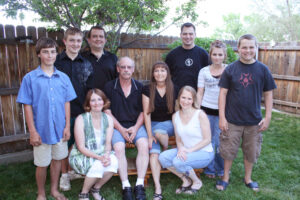 developed over the years, because they were not things that we had ever thought we would enjoy years ago. Still, today they are things we have found that we enjoy very much. It’s not just hiking, but it’s where we like to go to hike. We enjoy going to Thermopolis, the Black Hills, Washington state, the Grand Canyon, areas around our city of Casper. These places give us happiness and joy. We like the same television shows. We tend to be very comfortable at home together…granted, we might be taking a nap in our chairs, but that’s ok too. The point is that we are comfortable and happy together…and we are very blessed.
developed over the years, because they were not things that we had ever thought we would enjoy years ago. Still, today they are things we have found that we enjoy very much. It’s not just hiking, but it’s where we like to go to hike. We enjoy going to Thermopolis, the Black Hills, Washington state, the Grand Canyon, areas around our city of Casper. These places give us happiness and joy. We like the same television shows. We tend to be very comfortable at home together…granted, we might be taking a nap in our chairs, but that’s ok too. The point is that we are comfortable and happy together…and we are very blessed.
Eash year I find myself feeling more and more blessed with this man God has given to me. God knew exactly the kind of man I would need to make my life happy, and He couldn’t have picked a better man for me. God 
 knew that we would be compatible and comfortable together. We could not have known that for the long run. We were just kids of 18 and 20 years when we got married. What did we know? He knew that we were both stubborn enough to stick it out together and follow His plan for us and our lives. He blessed us with two daughters, Corrie Petersen and Amy Royce; two sons-in-law, Kevin Petersen and Travis Royce; four grandchildren, Chris Petersen, Shai Royce, Caalab Royce, and Josh Petersen; as well as fiancées Karen Cruickshank and Athena Ramirez; and great grandchildren Cambree and Caysen Petersen and baby Petersen coming in October. Blessings don’t get any better than those. They have all made us so very happy. Today is our 47th wedding anniversary. I love you Bob…and yes, “I still do.”
knew that we would be compatible and comfortable together. We could not have known that for the long run. We were just kids of 18 and 20 years when we got married. What did we know? He knew that we were both stubborn enough to stick it out together and follow His plan for us and our lives. He blessed us with two daughters, Corrie Petersen and Amy Royce; two sons-in-law, Kevin Petersen and Travis Royce; four grandchildren, Chris Petersen, Shai Royce, Caalab Royce, and Josh Petersen; as well as fiancées Karen Cruickshank and Athena Ramirez; and great grandchildren Cambree and Caysen Petersen and baby Petersen coming in October. Blessings don’t get any better than those. They have all made us so very happy. Today is our 47th wedding anniversary. I love you Bob…and yes, “I still do.”

 My grandson, Christopher Petersen has so much going for him these days. He has a fiancée, Karen with whom he is deeply in love, and two children, Cambree and Caysen, who are among his greatest blessings. A man can’t ask for anything better than that. When I think back of Christopher’s life, I am so amazed at just how quickly the years have flown by. Christopher was my first grandchild, followed the next day by his cousin Shai Royce. It was a whirlwind time in the life of our family. Chris and Shai were best friends, and still are close to this day, even though Shai lives 1200 miles away now. I can still picture them playing side by side at my daughter, Amy
My grandson, Christopher Petersen has so much going for him these days. He has a fiancée, Karen with whom he is deeply in love, and two children, Cambree and Caysen, who are among his greatest blessings. A man can’t ask for anything better than that. When I think back of Christopher’s life, I am so amazed at just how quickly the years have flown by. Christopher was my first grandchild, followed the next day by his cousin Shai Royce. It was a whirlwind time in the life of our family. Chris and Shai were best friends, and still are close to this day, even though Shai lives 1200 miles away now. I can still picture them playing side by side at my daughter, Amy  Royce’s house, where Chris went to daycare. It was a perfect part of my life, and one I feel very privileged to have been a part of. Having Amy care for the kids, allowed me to go over for lunch to spend time with my precious grandchildren. Still, I will never forget the first day my daughter, Corrie Petersen had to drop off her precious son at my house so I could take him to her sister’s house. The tears flowed liberally. I’m thankful Karen has not had to do that. It is truly awful.
Royce’s house, where Chris went to daycare. It was a perfect part of my life, and one I feel very privileged to have been a part of. Having Amy care for the kids, allowed me to go over for lunch to spend time with my precious grandchildren. Still, I will never forget the first day my daughter, Corrie Petersen had to drop off her precious son at my house so I could take him to her sister’s house. The tears flowed liberally. I’m thankful Karen has not had to do that. It is truly awful.
Now, Chris is the dad, and he is living out those perfect years. His children adore him. They run to him when he gets home, so excited to be with him. There is no greater feeling than the love your kids feel for you, and I’m so glad Chris has that. Isn’t it just amazing…how life changes? Chris likes to take his family to Rapid City sometimes with friends of theirs, and the kids absolutely love the water park there. He enjoys giving his family all the good things he can. He is a good dad and partner.
Chris still loves his cars, and tinkering on them, especially his prize-winning Camaro. He doesn’t race it, or anything, it is his show car, and his pride and joy. I can see…down the road…into the future, to a time when his 
 kids will be helping him tinker of his cars. I know his grandpas and his dad taught Chris how to tinker on cars, because that was where he wanted to be…with them…and mostly his daddy, Kevin Petersen. The boys, Chris and his little brother, Josh loved being with their daddy, especially when he was doing his mud truck races. I get excited thinking about the day when Chris’ kids, and especially Caysen are the ones out there perched on a box, “helping” Daddy work on his hot rod. Today is Chris’ birthday. Happy birthday Chris!! Have a great day!! We love you!!
kids will be helping him tinker of his cars. I know his grandpas and his dad taught Chris how to tinker on cars, because that was where he wanted to be…with them…and mostly his daddy, Kevin Petersen. The boys, Chris and his little brother, Josh loved being with their daddy, especially when he was doing his mud truck races. I get excited thinking about the day when Chris’ kids, and especially Caysen are the ones out there perched on a box, “helping” Daddy work on his hot rod. Today is Chris’ birthday. Happy birthday Chris!! Have a great day!! We love you!!

 It’s hard to believe that my mother-in-law, Joann Schulenberg has been in Heaven over four years now. She was such a big influence in my life for over 43 years. She was my second mom, and I loved her very much. I know that not everyone can really say they love their in-laws, but I was blessed in that I could. My mother-in-law was a capable homemaker, and she did all the “homemade” things she could. From her cooking and baking, including “murder” cake (a fudge-lovers dream) and the best caramel pecan cinnamon rolls you have ever tasted, to her clothing and knitted sweaters, she was someone who was impossible to “live up to.” I say that in a loving way, but you couldn’t out “homemake” my mother-in-law. And her work was perfect. Still, she was one that was willing to teach you what she knew, without making you feel inadequate.
It’s hard to believe that my mother-in-law, Joann Schulenberg has been in Heaven over four years now. She was such a big influence in my life for over 43 years. She was my second mom, and I loved her very much. I know that not everyone can really say they love their in-laws, but I was blessed in that I could. My mother-in-law was a capable homemaker, and she did all the “homemade” things she could. From her cooking and baking, including “murder” cake (a fudge-lovers dream) and the best caramel pecan cinnamon rolls you have ever tasted, to her clothing and knitted sweaters, she was someone who was impossible to “live up to.” I say that in a loving way, but you couldn’t out “homemake” my mother-in-law. And her work was perfect. Still, she was one that was willing to teach you what she knew, without making you feel inadequate.
For almost all of her married life, my mother-in-law was a homemaker. I believe there was a short time…maybe a year early on, when she worked, but mostly, she had a family to take care of and that was her career. I know that many people think that a woman should have a career, but the truth is that most of them would just love to be able to stay home and raise a family. There are a few out there, who are blessed to be able to do just that, and she was one of them. Now don’t get me wrong, a homemaker works as hard as any other career, and maybe harder. They have to wear many hats…nurse, chef, maid, seamstress, accountant, counselor, chauffer, teacher, and many more. They don’t work an 8-hour day, their day starts early and often goes into the late night. Still, my mother-in-law loved her job, and she loved her family. She also found time to make things like afghans that she could sell at craft fairs in town. She also made dish cloths and hot mits. Her things were beautiful and sold very well. She reminds me of the verse in the Bible, “She makes linen garments and sells them, and supplies sashes for the merchants,” Proverbs 31:24. That was what she did.
I think though, for my mother-in-law, that one of the greatest things to have happen was that her first great 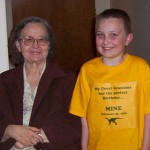
 grandchild was born on her birthday. Her mother, Nettie Knox, had the privilege of having her first great grandchild, Corrie Petersen, being born on her birthday. Then, Corrie managed to give her grandma the very same gift…her first great grandchild born on her birthday. Mom and Chris Petersen loved that as much as Corrie and Grandma Knox did. It was their special thing. And today marks the 26th anniversary of that gift…as Chris turns 26 years old. Today would have been my mother-in-law’s 91st birthday. Happy birthday in Heaven, Mom Schulenberg. We love and miss you very much.
grandchild was born on her birthday. Her mother, Nettie Knox, had the privilege of having her first great grandchild, Corrie Petersen, being born on her birthday. Then, Corrie managed to give her grandma the very same gift…her first great grandchild born on her birthday. Mom and Chris Petersen loved that as much as Corrie and Grandma Knox did. It was their special thing. And today marks the 26th anniversary of that gift…as Chris turns 26 years old. Today would have been my mother-in-law’s 91st birthday. Happy birthday in Heaven, Mom Schulenberg. We love and miss you very much.

